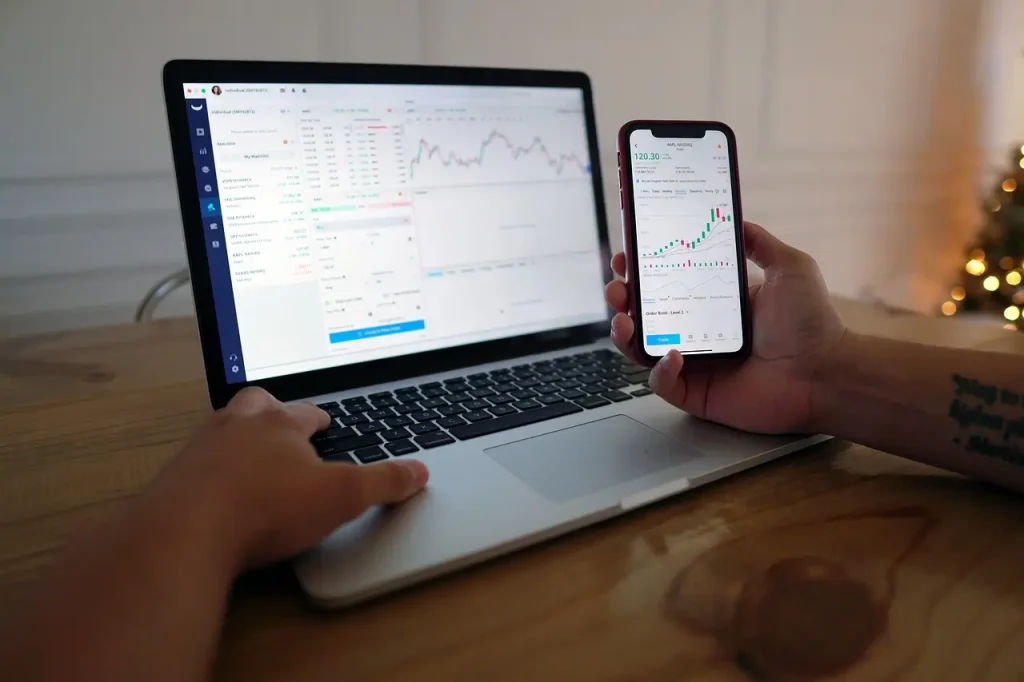Trading timeframes are essential components of any successful trading strategy, serving as the lens through which market movements are analyzed and interpreted. Whether you’re a day trader working with 5-minute charts or a long-term investor focusing on monthly patterns, understanding timeframes can significantly impact your trading performance and decision-making process.
A trading timeframe refers to the specific time period represented by each candlestick, bar, or point on a price chart. It defines the duration over which price action is consolidated into a single data point on your trading chart. Common timeframes range from 1-minute charts for scalpers to monthly or yearly charts for long-term investors.
Timeframes are fundamental to technical analysis because they determine the amount of information displayed on your chart and the perspective from which you view market movements. Different timeframes reveal different market dynamics, with shorter timeframes showing market noise and longer timeframes highlighting broader trends.
Trading timeframes generally fall into three main categories:
Short-term timeframes (1-minute, 5-minute, 15-minute, 30-minute, 1-hour) are primarily used by day traders and scalpers who aim to capture small price movements throughout the trading day. These timeframes require constant monitoring and quick decision-making.
Medium-term timeframes (4-hour, daily) are favored by swing traders who hold positions for several days to weeks. These timeframes filter out some market noise while still providing timely entry and exit signals.
Long-term timeframes (weekly, monthly, yearly) are used by position traders and investors who seek to capture major market trends and are less concerned with short-term fluctuations. These timeframes require patience but often yield larger potential profits per trade.
Selecting an appropriate timeframe depends on several factors:
Your trading style and personality play crucial roles in timeframe selection. If you enjoy fast-paced action and can make quick decisions, shorter timeframes might suit you. If you prefer thorough analysis and have limited time to monitor markets, longer timeframes are likely more appropriate.
Your available trading time is another important consideration. Day trading on short timeframes requires dedicated screen time during market hours, while position trading on longer timeframes demands less constant attention.
The markets you trade also influence timeframe selection. Highly liquid markets like major forex pairs can be traded effectively on shorter timeframes, while less liquid markets might require longer timeframes to filter out noise.
Your trading goals should align with your chosen timeframe. For instance, if you aim to generate daily income, shorter timeframes make more sense. If you’re building wealth over time, longer timeframes are more suitable.
Many successful traders use multiple timeframe analysis to enhance their trading decisions. This approach involves analyzing the same instrument across different timeframes to gain a more comprehensive market view.
A common multiple timeframe approach follows the rule of four, where traders use a timeframe four times longer than their trading timeframe to identify the overall trend, and a timeframe four times shorter to fine-tune entries and exits.
For example, a swing trader using a daily chart might look at weekly charts to confirm the broader trend and 4-hour charts to pinpoint precise entry points. This hierarchical approach helps align trades with larger market forces while optimizing execution.
Traders often make several mistakes when working with timeframes:
Timeframe hopping—constantly switching between timeframes looking for confirmatory signals—can lead to analysis paralysis and missed opportunities. Develop a structured approach to timeframe analysis instead.
Using timeframes that don’t match your trading style creates friction in your trading process. A patient, methodical trader will likely struggle with 1-minute charts, while an action-oriented trader might find weekly charts frustratingly slow.
Failing to recognize that indicators work differently across timeframes can lead to false signals. Indicators often need parameter adjustments when applied to different timeframes.
As traders gain experience, they often develop nuanced approaches to timeframe usage:
Timeframe confluence involves looking for situations where signals align across multiple timeframes, potentially indicating stronger trading opportunities. When support levels, trend lines, or indicator signals appear at the same price across different timeframes, they often represent more significant market levels.
Seasonal timeframe analysis examines how certain instruments behave during specific time periods, such as monthly or quarterly patterns that repeat historically. This approach can be particularly effective in commodity markets that follow seasonal cycles.
Market session timeframes focus on specific trading sessions (Asian, European, American) when trading certain instruments. For instance, currency pairs often show characteristic behaviors during particular market sessions.
There is no universally “best” timeframe in trading—the right choice depends on your individual circumstances, goals, and trading style. Many successful traders start with longer timeframes to understand broader market structure before exploring shorter timeframes.
Remember that mastering the use of timeframes takes practice and experience. Begin with a single timeframe that aligns with your trading goals, then gradually incorporate multiple timeframe analysis as your skills develop.
By understanding the role of timeframes in trading and developing a consistent approach to timeframe selection and analysis, you’ll gain a significant edge in your trading journey and move closer to achieving your financial objectives.
Join thousands of traders who trust VantoFX as their top trading provider. Experience the difference – trade with the best.
Don’t know which account will be best for you? Contact us.

Trading over-the-counter derivatives involves leverage and carries significant risk to your capital. These instruments are not appropriate for all investors and could result in losses exceeding your original investment. You do not possess ownership or rights to the underlying assets. Always ensure you are trading with funds you can afford to lose.